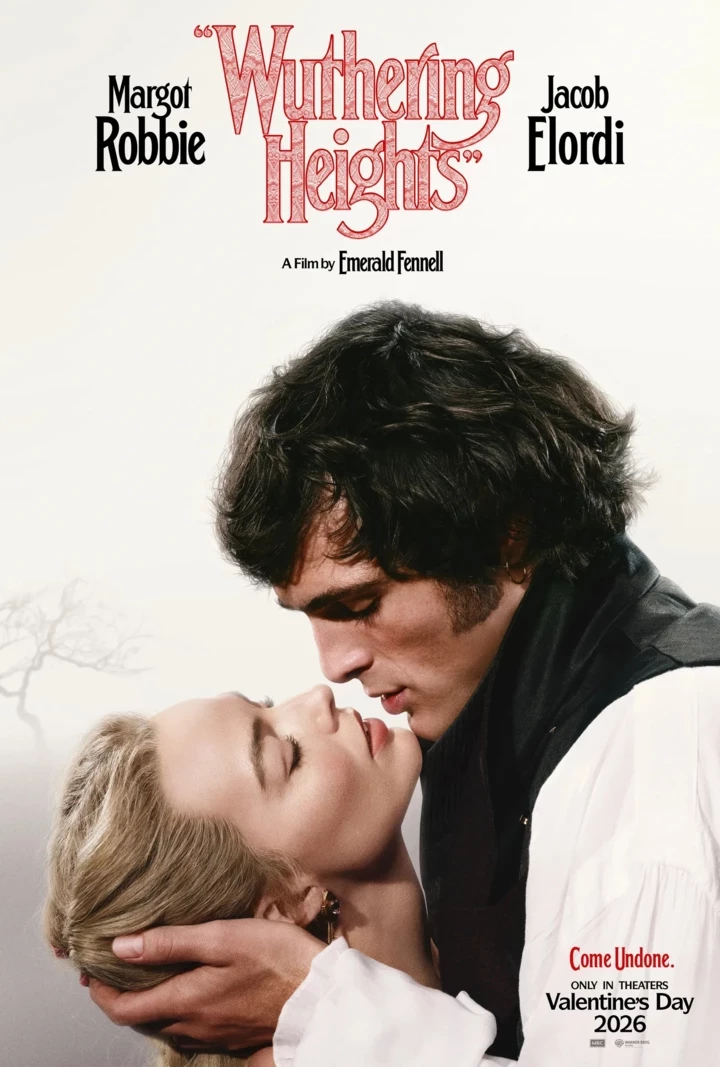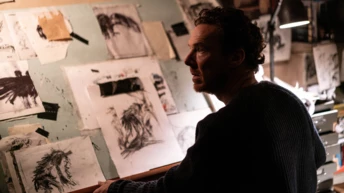
Save this storySave this storySave this storySave this story
In 1982, I began shooting an almost entirely improvised film,“This Is Spinal Tap,” which also happened to be my first as a director. It transformed my life and the lives of my three friends, co-writers, and co-stars: Christopher Guest, Michael McKean, and Harry Shearer.
People have often asked us if we would ever consider doing a sequel. For a long time, we resisted. Then, a few years ago, after a long legal battle, we finally got the rights back to the film. So Chris, Michael, Harry, and I decided to get together to see if there was any gas left in the tank. On March 6, 2024, my seventy-seventh birthday, in the city of New Orleans, we started shooting the sequel.
We also decided that it was time to tell the full story of the making of the original “This Is Spinal Tap.” What you are about to read is a short excerpt from that account.
Early on in editing “This Is Spinal Tap,” it became obvious that some of the film’s plotlines would have to be thrown out altogether. For example, Spinal Tap initially had an opening act, a New Wave band called the Dose. The guys are against having the Dose tour with them. They feel that the group’s punky music isn’t a good fit with heavy metal. But then, during a sound check, they catch sight of the Dose’s lead singer, Stellazine, played by Cherie Currie, the former lead singer of the Runaways—a beautiful, sexy, young blonde in a skintight, metallic-blue catsuit.
After a deliberation of about an eighth of a second, the band does a one-eighty and insists to Ian (Tony Hendra) that it’s critical the Dose be their opening act for the entire length of the tour. Ian obliges and books the band. But there’s a problem: Stellazine is what one might deem a “free spirit.” After a scene in which Nigel (Guest) is seen making time with her, he turns up with a herpes sore on his lip. Next, we see David (McKean) pairing up with Stellazine, after which he, too, sports a herpes sore. Stellazine then hangs out with Derek (Shearer) and then Viv (David Kaff), both of whom subsequently also display the herpes badge.
A band meeting is called: Should the Dose remain on the tour? The four herpes-afflicted Tap members vote the Dose out. Mick (R. J. Parnell), who is clueless and herpes-free, votes for the Dose to stay.
Currie’s scenes were terrific, but the travelling-herpes show took way too long to play out. So, unfortunately, the sequence had to go. There is, however, a remnant of this subplot in the scene in which Nigel and David defend the “Smell the Glove” album cover to Bobbi Flekman (Fran Drescher). Nigel has a sore on his lower lip, and David has one on his upper lip. Conspicuous as these blemishes are, they go unexplained. Depending on your take, this is either a complete non sequitur or an ambiguous “What the hell is going on?” moment. Regardless, it always got a laugh—which surprised me.
We also abandoned a side trip into David’s personal life in which it’s revealed that, as a result of a fling he had years ago with a groupie, he has a son named Jordan St. Hubbins. Jordan, now a teen-ager, lives with his mother in Phoenix and has rebelled by becoming a punk rocker. This upsets David and leads to a backstage father-son confrontation. “The actor playing my son was Sean Frye, brother of Soleil Moon Frye, of ‘Punky Brewster’ fame,” McKean recently recalled. “But the squabble at the venue and David’s disapproval of the kid’s appearance just didn’t land right.”
For similar reasons, we ditched a sequence that showed Tap, after their “Jazz Odyssey” fiasco as a four-piece, trying to carry on with a new guitarist. As McKean remembers it, “We had this scene where we get a replacement guitarist for Nigel, a kid named Ricky. He’s only nineteen, and he comes in and just plays the shit out of ‘Hell Hole.’ He’s really good, incredibly good-looking, and he’s all over the stage. Jeanine”—June Chadwick—“keeps looking at him lustfully. At one point, Ricky lifts up his guitar in a pose and it hits me in the face. After that, he’s out. It’s a really cool scene in its own way, but it had no intro or outro, and that was the problem. Where did he come from? Do we have to see him auditioning? We didn’t have time to get into all that.”
Ricky, incidentally, was played by a musician named Louie Merlino, who has since done hundreds of sessions as a backup singer and now lives in Las Vegas.
There was also a subplot about Derek going through a painful divorce. We filmed a number of scenes of him on the phone, getting the latest bad news from his lawyer. In one scene, he learns that his soon-to-be ex has taken out a full-page ad in the New Musical Express laying out her settlement demands. In another, he is seen saying, “She can’t have the Lamborghini. . . . O.K., she can have the Mini.” Again, it slowed the momentum. So the audience would never learn of Derek’s crumbling marriage.
Parnell, who had no background in acting, delivered an incredible performance in a scene we cut. The setup was that Artie Fufkin (Paul Shaffer) had succeeded in getting the band to do an earlymorning radio-station appearance. What Artie didn’t know was that, on that day, the station had changed its programming format from sports talk to rock and roll. One caller, who wasn’t aware of the change, asks the band, “Can you settle a bet I have with a buddy of mine? I think Ferguson Jenkins had fifty shutouts with the Cubs. He says he had forty-four. Who’s right?” Just as the radio host is about to brush off the question, Mick—shades on, cigarette in hand—answers, “Actually, you’re both wrong, mate. Ferguson Jenkins has had forty-eight career shutouts, and not all of them were with the Cubs.”
Then, in his sleepy drawl, he proceeds to deliver a complete statistical breakdown of Jenkins’s career. But since we ended up losing the radio-station scene, we lost with it Parnell’s eloquent Ferguson Jenkins soliloquy.
I not only cut scenes we had planned. On any given day, brilliant stuff would spontaneously fly out of someone’s mouth. A lot of that stuff had to go, too, to keep the film’s motor running. In particular, I remember a dissertation that David delivers to Marty (as played by me) about slime molds:
Slime molds are so close to being both plant and animal that it’s like they can’t make up their mind. And they’re thinking now that maybe this is who’s been running the earth all this time: these layabouts who can’t commit.
’Cause there’s more slime molds than any other form of protoplasm on the planet. And if they wanted to—if they finally made up their minds to commit to being either plant or animal—they could take us over like that. You’re walking down an alleyway. You slip and twist your ankle, maybe. It wasn’t an accident. It was an attack.
There was also Nigel’s devotion to the stop-motion character Gumby. “I always liked Gumby,” Guest told me. “I wrote to Art Clokey, who had created him, and he wrote back, which was just insane. I wanted his permission to use the character and the T-shirt. We had a real correspondence for a while. He would send me handwritten letters and draw little Gumby and Pokey figures at the top of them, sometimes with little speech bubbles that said things like ‘Hi, Christopher!’ ”
On a whim, we shot a scene in which Nigel talks back to the television while watching a Gumby cartoon. In another scene we cut, the band discusses their plan to go to Graceland to visit Elvis’s grave. Nigel, with a toy Gumby tucked into the breast pocket of his shirt, bends Gumby’s head as a show of respect to the King. In the completed film, you’ll notice Gumby in Nigel’s pocket in the “Cups and Cakes” scene.
It’s easy to become self-indulgent. You fall in love with things that make you laugh, and you want to leave it in, even though it doesn’t help sculpt the elephant. But you have to be ruthless. If you indulge, you lose the audience.
So we sculpted away. Originally, the scene in which the band gets lost trying to find the stage had more dialogue between the band and the maintenance man who gives them directions (played by a terrific actor named Wonderful Smith). We had a bit in which Nigel positions himself in a fixed spot, shouting, “Hello! Hello!” so that the other guys would have a reference point to prevent them from getting even more lost. But this took away from a more important bit, the band’s efforts to amp themselves up for the crowd. (It was in this spirit that Harry shouted out a line that became one of the film’s most quoted: “Hello, Cleveland!”)
The “Australian’s nightmare” scene, in which Ian ridicules Jeanine and quits, used to include a series of filthy comebacks improvised by Chadwick, with Jeanine calling Ian a “bumbling, dwarf-willied prick,” a “fucking twit full of shit,” and an “impotent bat ’n’ balls full o’ crabs.”
As tempting as it was to leave these moments in, all they did was give the elephant a second trunk. When it came to the scenes we shot depicting the seamy sex-and-drugs side of rock and roll, we made the decision to play that aspect down. There is a fleeting moment in which you can see some groupies sniffing powder. But we cut the other scenes showing drug use, and one in which Nigel has his arm around a topless girl. We felt it went against the tone of the film.
For me, looking back after forty years, all I see are the flaws that stayed in the movie, such as the continuity mistakes that I would have been able to avoid in a scripted film. With an improvised film, there are times when you just have to live with the mismatches. For instance, in the scene in which the band reacts to the all-black cover of the “Smell the Glove” album, you’ll notice that Nigel’s position keeps changing from shot to shot. First, we see him standing to the right of Ian. Then, after a cut to David and Jeanine, we go back to Nigel, who is now standing to Ian’s left as he observes, “It’s so black. It’s, like, how much more black could this be? And the answer is: none. None more black.” Normally, you want to avoid that kind of gaffe. But it was the only take in which Chris said, “None more black,” so we lived with it.
Few viewers pick up on this stuff. The editor Bob Leighton, with whom I worked on this and many of my other films, has always said that it’s more important to make the audio work smoothly than the visuals. A jump in sound is much more jarring than a jump in picture. If the dialogue is flowing, it’ll paper over visual mismatches. (A little side note: You can hear Leighton’s voice near the beginning of the film. When the roadies are loading in the band’s giant horned skull, a voice tells them, “Watch his mouth. Watch his mouth.” We added that line in postproduction.)
Originally, to give the film a parallel set of bookends, I had Marty address the camera at the end the same way he does in the opening. He explains what happened to Tap after their Tokyo triumph: another breakup, followed by another re-formation—this time with a drummer named Nicky Pepys, the son of their first drummer, John (Stumpy) Pepys.
Though this would have proven remarkably prescient—in 2007, Led Zeppelin would reunite with Jason Bonham, the son of their late drummer, John Bonham—Marty’s epilogue just didn’t feel right. It was much better to leave Tap in their moment of serendipitous triumph, with their next steps existing entirely in the audience’s imagination. So one last cut was made. ♦
This is drawn from “A Fine Line Between Stupid and Clever: The Story of Spinal Tap.”
Sourse: newyorker.com







